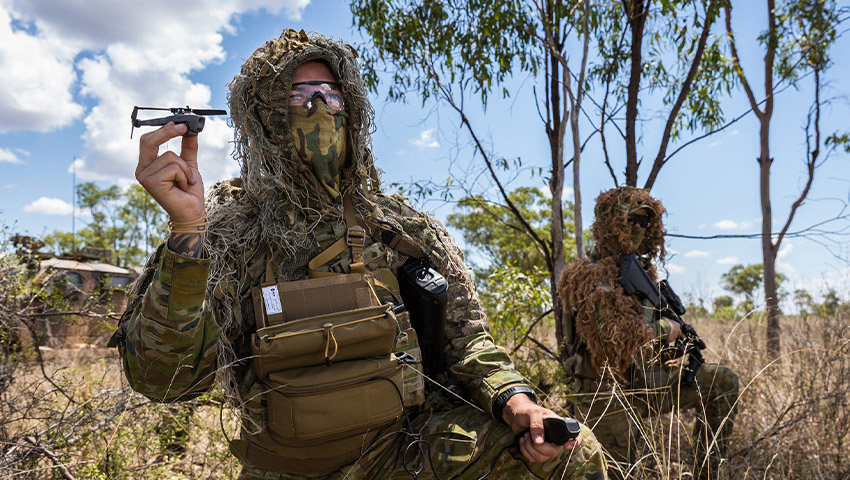Research conducted by the University of South Australia in partnership with the US Air Force Academy (USAFA) has revealed that as military robots become a valuable member of the team, military personnel begin to treat them like colleagues rather than machines.
To continue reading the rest of this article, please log in.
Create free account to get unlimited news articles and more!
It is increasingly common to use robots in war zones to examine and disarm hazards or recover objects with the understanding that the loss of a robot is a far more acceptable outcome than the death of a solider.
University of South Australia Professor of Human Computer Interaction, Professor Mark Billinghurst, has collaborated with Dr James Wen and other members of the USAFA to explore these connections and their impact on team efficiency and productivity on the frontline.
Their research shows that for robots to be fully integrated within a human-machine team (HMT), they first must be accepted as teammates. To facilitate this, a lot of work has been done over the years to make robots more ‘human-like’ by altering their physical characteristics and capabilities.
Professor Billinghurst said the results show first-hand how emotional connections can impact decision making in the field, "We have evidence to show that teams working with a personified robot are significantly more mindful about limiting damage and harm towards it – but this can have significant consequences."
While humanising robots strengthens the working relationships between soldiers and their robots, it also inflates the value of the robot team members in the minds of military personnel, leading to an increased emotional response when the robot is put under stress.
Designing a simulation-based application, researchers tracked the emotional responses of two teams of participants who undertook a range of simulated tasks with either a personified or non-personified robot.
"Participants who limited their use of robots or chose not the use the robots had a similar overall achievement to the teams that did, the result of an increased level of self-sacrifice in the form of working harder to gain the same result," Professor Billinghurst added.
The study showed that teams working with a personified robot were 12 per cent less likely to put their robot at jeopardy of destruction compared with teams working with a non-personified robot, and that they were more sensitive to the robot’s health and the possibility of seeing the robot ‘killed’ in action.
This is the first time that research has measured how actions can be altered by empathy when potential harm is induced in a simulation.
"Rather than sacrificing the robot, participants who were working with a personified robot had to increase their workloads and were willing to take more personal risks and would stop before putting the robot at risk – impacting their decision making under pressure," Professor Billinghurst said.
Where split second decisions can determine the difference between life and death, it will become increasingly important to monitor soldiers working in collaboration with robots.
It is expected that military robots will be increasingly used in the future, necessitating further research, training and evaluation on the topic.
The research also has implications for a wide range of other human/robot collaborative tasks in non-military settings, such as on the factory floor, in hospitals, or even in the home.
Stephen Kuper
Steve has an extensive career across government, defence industry and advocacy, having previously worked for cabinet ministers at both Federal and State levels.

 Login
Login








